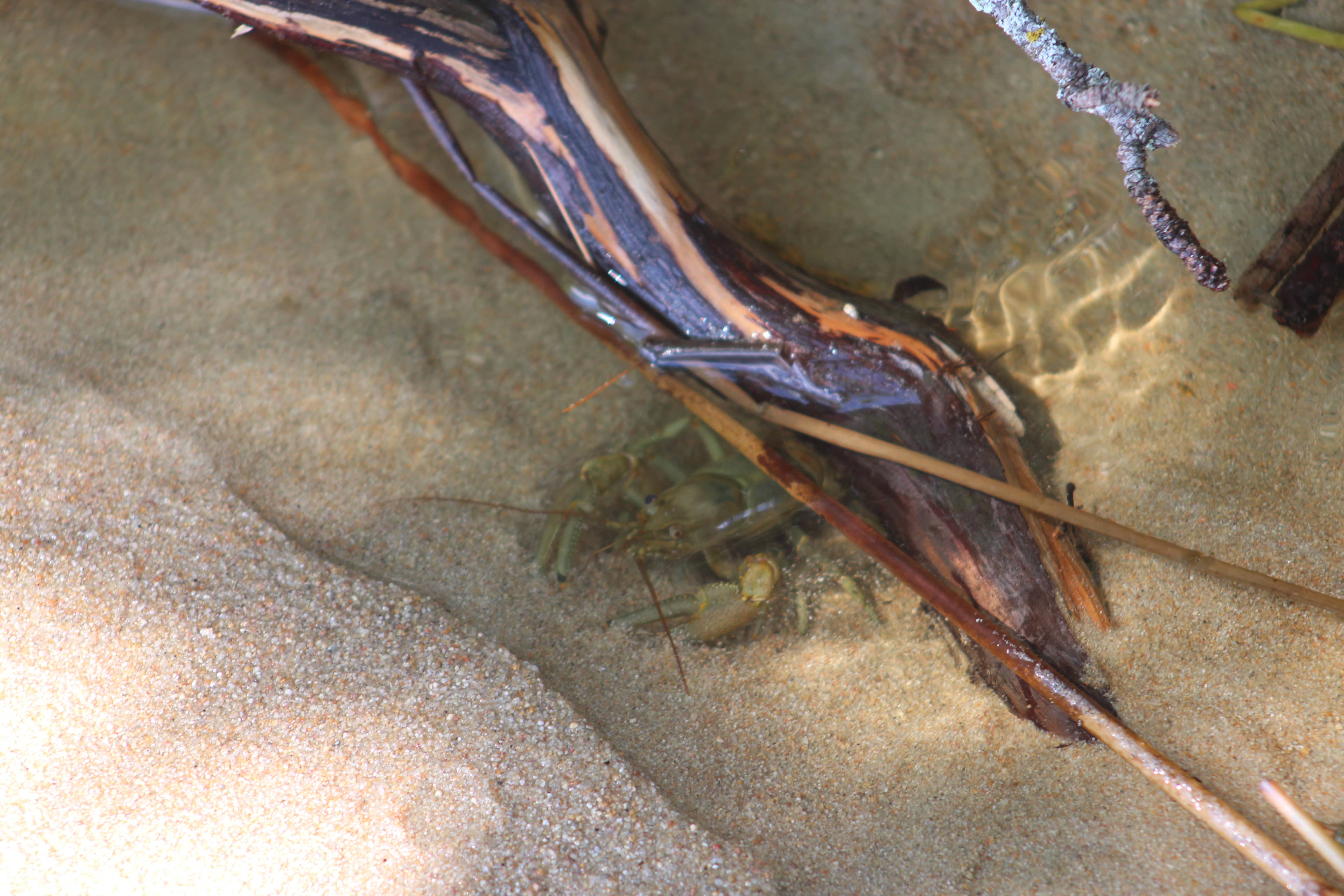
Crayfish come in a variety of colors, from light gray and olive to vibrant oranges and blues. Matching them can provide great fishing, and putting presentations out there that imitate them can connect with both bass and walleyes all summer long. Simonson Photo.
By Nick Simonson
Summer adds so much to the menu for foraging gamefish. From baitfish and young-of-the-year panfish like perch, bluegills and white bass, to insects and crustaceans, now is the time that bass, walleyes and other popular targets for anglers fatten up to survive the leaner months in winter and make it to spring to start the process anew. Perhaps one of the most notable summer food items is the crayfish. Whether it’s smallmouth bass foraging in the rocks, or walleyes snapping them up opportunistically, a population of crayfish in a water, or in certain sections of it can turn a good summer angling outing into a great one. Making the connection between crayfish and the species that eat them is key to good fishing in the near term.
Species and Size
In North Dakota there are three species of crayfish which are more or less native to the state’s waters. In Minnesota, the invading rusty crayfish joins them. It has not yet made its way into or across the Red River and is considered an aquatic nuisance species due to its size, aggressive nature and exponential population growth. It’s also quite large in comparison to native species. All of them, however, provide food for fish and typically reside in sandy, gravelly or rocky substrates and can often be seen in the shallows sunning themselves in warmer water and hunting for food of their own. It is there that they become targets of foraging game fish.
Whether they are young inch-or-two-long crayfish, or bigger, more mature specimens, these crustaceans are often a primary prey species of both smallmouth and largemouth bass, and on up the age chart for those fish, the size of an edible crayfish increases as well. Keeping a close eye on the predominant size of crayfish will give bass anglers an idea on what size tube, creature bait or crankbait to cast out for bass of either species. Additionally, walleyes foraging in a rocky area will opportunistically pick off crayfish and the crustaceans can comprise a significant portion of their diet in summer based on water conditions, bottom composition and locations of fish.
Matching Up
Crayfish come in a variety of colors, as well as the previously mentioned sizes and there are dozens if not hundreds of baits available to anglers to match the many hues of crayfish in the wild. From olive and deep green to blue and brown to tan and bright orange, all of these shades can be found on crayfish, and sometimes multiple colors on the same one. One color on crayfish that seems to stick out and signal snack time, as to the relationship between predator and prey, is orange. Many crayfish sport an orange coloration and this can be seen as an ingrained and instinctive signal for predators to come in for a look and a bite. Thus, having plastics, jigs, and crankbaits on hand for bass, and perhaps a few specialty crankbaits with an orange trim or full crayfish pattern for walleyes is in order for the open water season when crayfish are present.
Additionally, in those rocky environments like shield-style lakes, rock-filled rivers, and other places where the environment provides ample hiding and rearing places for crayfish, anglers are wise to bulk up on lures which produce the illusion of the predominant prey. Tubes with tentacles and creature baits with paddles, claws, legs, and other appendages will work well for bass as they easily mimic the scooting, flapping action of a retreating crayfish flicking its tail and bearing its claws defensively. Even custom walleye spinners with hints of orange and two fluttering butterfly blades separated by a few beads can effectively imitate a fleeing crayfish. Having these options on hand will help up the odds when fish have found a summer smorgasbord of crayfish hiding in and around the rocks.
As summer heats up and it seems like crayfish are popping out everywhere, keep the prey-and-predator connection in mind for that next fishing trip. Bulk up on plastics for bass angling in those areas where crayfish are common to match the hatch, and consider adding a flash of orange or full-on crayfish patterns in favorite styles and brands of crankbaits and spinner rigs to connect with walleyes. In a pinch, these adjustments to match these bottom-crawling crustaceans will likely put more fish in the boat.

A hint of orange is an environmental cue which triggers fish feeding on crayfish, like this smallmouth bass that took a bucktail clouser minnow fished near the bottom. Simonson Photo.
